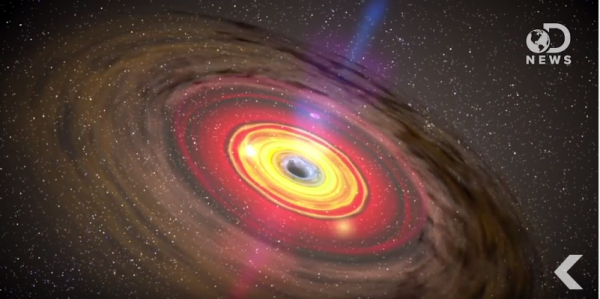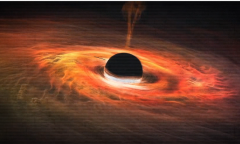By Prei Dy, | May 02, 2017

Scientists has reportedly found Milky Way's 'missing link' black hole in the Sagittarius constellation. (YouTube)
A team of astronomers found evidence that the mysterious 'missing link' black hole is hidden in the Sagittarius constellation that lies at the galactic heart of the Milky Way.
The 'missing link' black hole, which explains the gap between small and supermassive black holes, has been allegedly found about 26,000 light years (or 7.9 Kiloparsecs) from Earth in the global cluster of the Milk Way called NGC 6624. Globular clusters are gravitationally bound swarm of millions of old stars occupying regions that are just a few light years across.
Like Us on Facebook
The team of international scientists spearheaded by Dr. Benetge Perera from the University of Manchester noticed a strange behavior on one of the globular cluster's stars: PSR B1820 30A, which is a superdense and highly magnetized pulsar. It is the closest known pulsar to the center of any globular cluster and the first to be found orbiting a black hole.
"Pulsars like PSR B1820 30A act as fantastically accurate clocks and allow us to determine precisely their distance from the Earth in the same way that global positioning satellites work," Professor Andrew Lyne, an astrophysicist from Manchester, said.
"The pulsar is therefore very sensitive to any motion arising from the gravity of other nearby massive objects, such as black holes, making it easier for us to detect them."
The pulsar was discovered using the Lovell Telescope, based at Jodrell Bank, in 1990. The team has spent 25 years observing the PSR B1820 30A. The analysis also included data using France's Nancay Radio Telescope.
While generally all black holes are difficult to find because of the little light they give off, intermediate-mass black holes (IMBHs) are in particular rarely observed. As a matter of fact, there has never been a conclusive observation before, and only indirect and circumstantial evidences were found.
That being said, Perera believes that the best place to find IMBHs is the globular clusters, as its center could provide a likely environment to form massive black holes. And the detection of IMBHs could pave way to understand the missing link between the various kinds of black holes.
"This discover provides important input to our understanding of how intermediate-mass black holes and the clusters themselves form and evolve," Perera said.
-
Use of Coronavirus Pandemic Drones Raises Privacy Concerns: Drones Spread Fear, Local Officials Say

-
Coronavirus Hampers The Delivery Of Lockheed Martin F-35 Stealth Fighters For 2020

-
Instagram Speeds Up Plans to Add Account Memorialization Feature Due to COVID-19 Deaths

-
NASA: Perseverance Plans to Bring 'Mars Rock' to Earth in 2031

-
600 Dead And 3,000 In The Hospital as Iranians Believed Drinking High-Concentrations of Alcohol Can Cure The Coronavirus

-
600 Dead And 3,000 In The Hospital as Iranians Believed Drinking High-Concentrations of Alcohol Can Cure The Coronavirus

-
COVID-19: Doctors, Nurses Use Virtual Reality to Learn New Skills in Treating Coronavirus Patients











